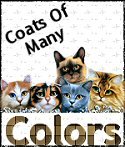It's been a gweat day.
I poked mummy awake with my sexy paws at 530am before her new handphone had a chance to serenade her awake.
Heh...this is to show the giwaffe I CANNOT be wepwaced so easily by a new handphone! So!
Well anyway, to my surpwise, mummy got up and gave me FISH!
Nice fwesh fish!
Not stinky goodness!
Much as I wike stinky goodness, nothing beats a bowl full of nice fwesh FISH, all cooked and deboned and weady to eat.
Yummy!
And after fiwwing my sexy tummy full to the bwim with nice fwesh fish, I awwowed mummy to go back to bed and with all my genewosity, awwowed her to wwap me up in her bwanket and cuddle me to sweep.
And here's me, after the catnap, and deciding what to do for the west of this wonderful day. Simpwy too beautiful for words!
Simpwy too beautiful for words!
Evewyday should be wike this!
Wednesday, January 3, 2007
Subscribe to:
Post Comments (Atom)



.jpg)






3 comments:
2006–2007
About the CBEST
PROGRAM OVERVIEW
The California Basic Educational Skills Test™ (CBEST®) was developed to meet requirements of laws relating to credentialing and employment. This test requirement in no way replaces any of the other requirements of subject matter knowledge, professional preparation, and practice teaching or field experience used in the issuance of credentials. The CBEST is designed to test basic reading, mathematics, and writing skills found to be important for the job of an educator; the test is not designed to measure the ability to teach those skills.
The California legislation that established the CBEST directed the State Superintendent of Public Instruction, in conjunction with the California Commission on Teacher Credentialing (CCTC) and an Advisory Board consisting of a majority of educators from California classrooms, to develop the CBEST. The development of the CBEST included definition of the primary skills to be tested; test-item writing and review for relevance to the specified skill areas; field testing; a validity study focusing on the accuracy, fairness, clarity, and job relevance of each test item; bias reviews; standard-setting studies; and determination of the passing scores. Since the initial development of the CBEST, new test items have been developed by contractors and all items have been reviewed by committees of California educators to verify that they meet test specifications adopted by the CCTC and are free of bias.
The CBEST was selected by the Oregon Teacher Standards and Practices Commission (TSPC) in July 1984 to assess educators’ basic reading, writing, and mathematics skills in the English language.
In 1995, National Evaluation Systems, Inc. (NES®), was contracted by the CCTC to assist in the development, administration, and scoring of the CBEST.
CBEST Test Design
The CBEST consists of three sections: Reading, Mathematics, and Writing. CBEST test specifications, including information about the skills eligible for testing in each section, are available on the CBEST Web site, www.cbest.nesinc.com, by selecting “Test Specifications.”
Tests may include some questions that will not count toward an examinee's score. These questions are placed on the test in order to collect information about how they will perform under actual testing conditions.
Reading section (50 multiple-choice questions). The questions in this section assess your ability to comprehend information presented in written passages, tables, and graphs. The materials used in the test will vary in level of difficulty and complexity and are drawn from a variety of fields. No questions require outside knowledge; all the questions are related to a particular passage and can be answered on the basis of information provided in the passage.
The Reading section questions are from two major skill areas: critical analysis and evaluation, and comprehension and research skills. Approximately 40 percent of the questions from this section are drawn from the critical analysis and evaluation area, and approximately 60 percent are drawn from the comprehension and research skills area.
Mathematics section (50 multiple-choice questions). The questions in this section require you to solve mathematical problems. Most of the questions are presented as word problems.
The Mathematics section questions are from three major skill areas: estimation, measurement, and statistical principles; computation and problem solving; and numerical and graphic relationships. Approximately 30 percent of the questions from this section are drawn from the estimation, measurement, and statistical principles area; approximately 35 percent are drawn from the computation and problem solving area; and approximately 35 percent are drawn from the numerical and graphic relationships area.
Writing section (2 essay topics). This section includes two writing topics that assess your ability to write effectively. You must respond to both topics. One topic asks you to analyze a given situation or statement; the other asks you to write about a specified personal experience. You are not expected to demonstrate any specialized knowledge in your responses.
omg... nipple!!!
Uhmm....someone advertising an educational pwogwamme for a kitty?
hmmm....
But genius kitties wike me don't need these things....
why do i need to work when I've got all I want of stinky goodness and fwesh fish?
Oh....and I onwy weawised after mummy's fwen the cow pointed out....
Whatever that appeared there was an accident!!!!
Post a Comment